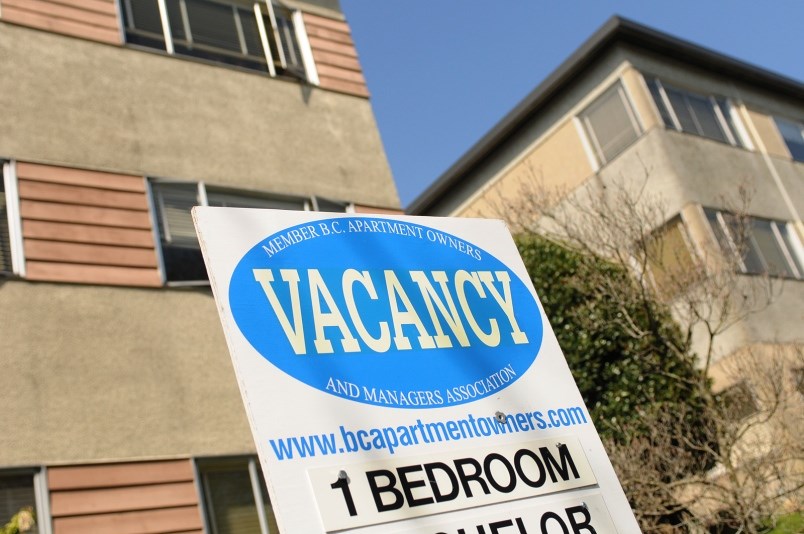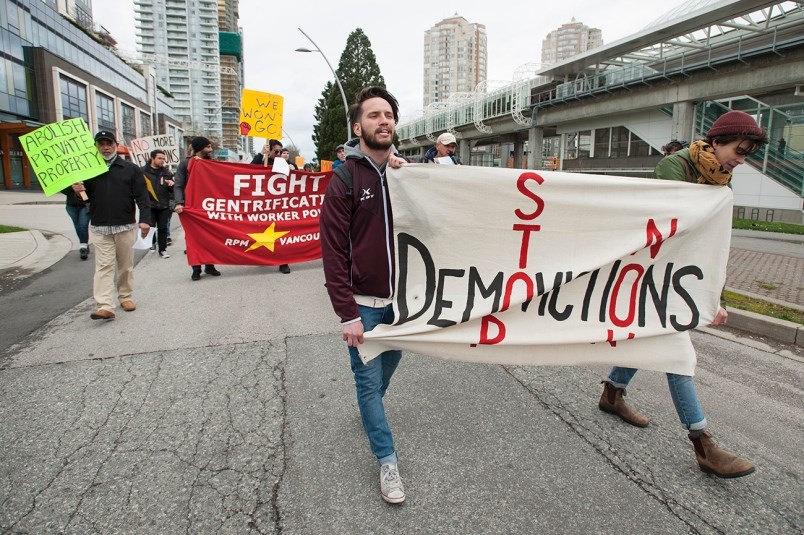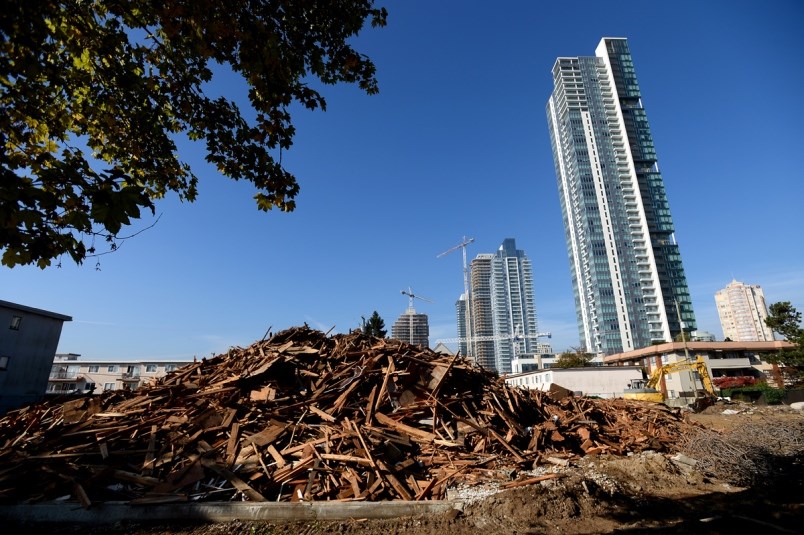There are 10 things the City of Burnaby can start doing right now to improve housing affordability, according to the Mayor’s Task Force on Community Housing.
The “quick starts” are part of the task force’s interim report, which was released Friday and will come to council on Monday.
The task force is halfway through its six-month mandate to find solutions to Burnaby’s housing crisis. The special committee is comprised of politicians, activists, developers, non-profit housing providers and local residents.
A final report is expected to provide more long-term strategies for addressing housing issues.
The task force will now conduct a survey, asking residents their opinions on the 10 quick starts, which is expected to be completed by May 22.
On Monday, council will receive a report on the 10 recommendations, but is not expected to vote on implementing them yet, unless a council member makes an additional motion.
Lee-Ann Garnett, Burnaby’s director of long-range planning, said task force members were “challenged to look at everything and they were challenged to be bold and innovative.”
These are the 10 “quick starts”:
1. Create a modular housing strategy
Burnaby already has one modular housing project under development. The 52-unit supportive housing complex on a city-owned Norland Avenue lot has been delayed, but is expected to be completed this summer.
The task force is urging the city to pursue more partnerships with B.C. Housing’s Rapid Response to Homelessness Program.
According to Garnett, the message from the task force on modular housing is, “We like it. We want more of it.”Ěý
The city is already pursuing more modular housing projects, but the first “quick start” is meant to put more urgency behind the effort, Garnett said.ĚýĚý
“It's kind of acknowledging that this is a good strategy and to sort of keep your foot on the gas pedal,” she said.

Mayor Mike Hurley has previously indicated interest in using the modular housing model to house individuals who are not necessarily homeless or at risk of becoming homeless. He said modular homes could provide temporary accommodation for renovicted or demovicted tenants waiting to move in to a newly built or renovated home, but such a strategy is not included in the interim report.
2. Regulate short-term rental housing
The task force wants the city to crack down on short-term rental services such as AirBnB. Short-term rentals can take much-needed housing out of the long-term rental market, the task force says.
The city should follow in Vancouver’s footsteps by regulating short-term rentals using its business-licensing powers.
If council agrees to move forward on this recommendation, city staff will study the approach taken in Â鶹´«Ă˝Ół»and elsewhere to identify best practices before recommending new bylaws, Garnett said.
3. Adopt a robust tenant relocation strategy
Unlike other so-called “quick starts” in the report, this item is meant as more of a signal to the public that the task force is working on recommendations for a “robust tenant relocation strategy” that will be included in the final report.
“They wanted to include it in this as a 'quick start' to show that this is really important and a key piece of this whole task force,” she said.
Hurley has ordered a de facto moratorium on redevelopment proposals in the city while this policy is in development.
4. Establish a rent bank
Burnaby should follow New Westminster and Â鶹´«Ă˝Ół»in establishing a rent bank, the task force says.
Rent banks provide low- or no-cost loans to tenants temporarily short of the cash needed to cover their rent or utility bills. The task force said Burnaby should fund the rent bank with its Community Benefit Housing Fund.
5. Allow extra density in projects with below-market rentals
This recommendation encourages council to allow developers more density in projects if they include “below market rental housing.”
To do this, the task force recommends layering zoning on a single site to ensure the additional density is used for below-market rentals. This could mean adding a rental building the site of a market condo or rental project or even separate zoning for certain floors in a building.
Burnaby would likely implement its rental-only zoning in such a situation, Garnett said. Last year, the city was the first in the province to put rental zoning on its books, but has yet to implement it.
6. Pursue “strategic” partnerships
The task force wants Burnaby to seek out partnerships with other levels of government, non-profits and private companies to create non-market housing.
These various groups have a wide variety of assets to contribute to the creation of new housing, the report says.

“Combining and leveraging these assets can lead to win-win solutions that result in more non-market rental units to meet Burnaby’s housing needs,” says the interim report.
7. Use a “portfolio approach” to tendering city lands
In the past, the City of Burnaby has tendered city lands for lease to non-profits on a one-by-one basis. The task force wants that to change.
If an organization (or partnership of organizations) can lease several separate lots at once, its ability to create and provide affordable housing could be greatly improved, the task force said.
“A portfolio approach allows pooling of resources, cross subsidization and possible economies of scale,” the report says.
The city already owns lots suitable for long-term lease and could buy more using its $123-million housing fund, the task force said.ĚýĚý
According to the task force, Â鶹´«Ă˝Ół»has found success using the portfolio approach.
8. Streamline zoning to allow “missing middle” housing
The task force wants Burnaby to simplify its zoning and permitting requirements to make way for laneway homes, duplexes, triplexes and fourplexes throughout the city.
Garnett said such a review isn’t exactly a “quick” process, but it’s inclusion among the “quick starts” means it’s a process city staff can get started on soon. She pointed out that staff are already reviewing some forms of “missing middle” housing, such as laneway homes.
9. Study land value capture practices
If your property value increases as a direct result of public investment in infrastructure or rezoning for new density, you shouldn’t be the sole benefactor. That’s the premise behind a land value capture.
The city already has a form of this in its town centres, where developers can pay the city to allow additional density in their projects. The study would focus on how to capture land value increases outside the town centres.
The task force is calling on the city to study how it could benefit from such a policy and how to go about it.
The task force report notes that Metro Â鶹´«Ă˝Ół»and TransLink are also studying the issue.
10. Gather empty homes data
Burnaby needs to know how many of its homes are sitting empty, according to the task force.
The report suggests the city could request data collected by the province in speculation tax declarations.
“In order to know if action is required, the city first needs to know if it has an empty homes problem,” the report says.
Recently released data showed that non-residents of Canada owned one in four condos built in Burnaby in 2016 and 2017.
Ěý
Ěý
Ěý
Ěý
Ěý
Ěý



